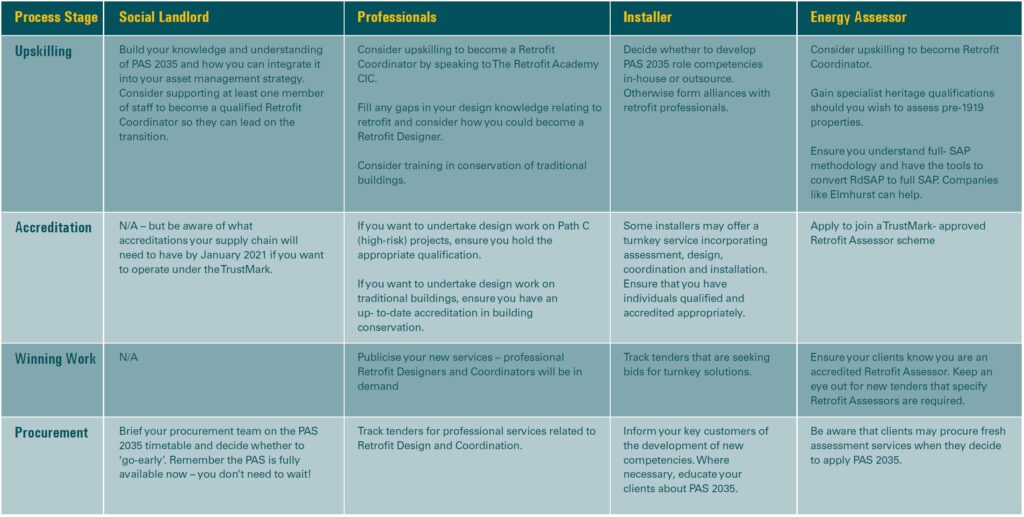What is it and what does it mean for you?
In May 2019, the British Standards Institute (BSI) published a document called BSI Publicly Available Specification (PAS) 2035. You will not have heard about this on the national news. However, if you work in the energy efficiency sector, it will have a huge impact upon you, your clients and suppliers. The purpose of the document is to create a framework for deep retrofit projects that are high quality, safe and fit for the future. It is a long-overdue response to the Each Home Counts Review (2015-2017). This article clarifies the impacts and timescales of PAS 2035 and should get you thinking about how to prepare for what should be the most radical shake-up of the energy efficiency industry in a generation.
What is PAS 2035?
Contrary to popular belief, PAS 2035 is not a new BSI Standard – it is a framework for project delivery. It addresses the fundamental structural problems that blight many energy efficiency projects, no matter how well-intentioned the participants may be. Problems such as:
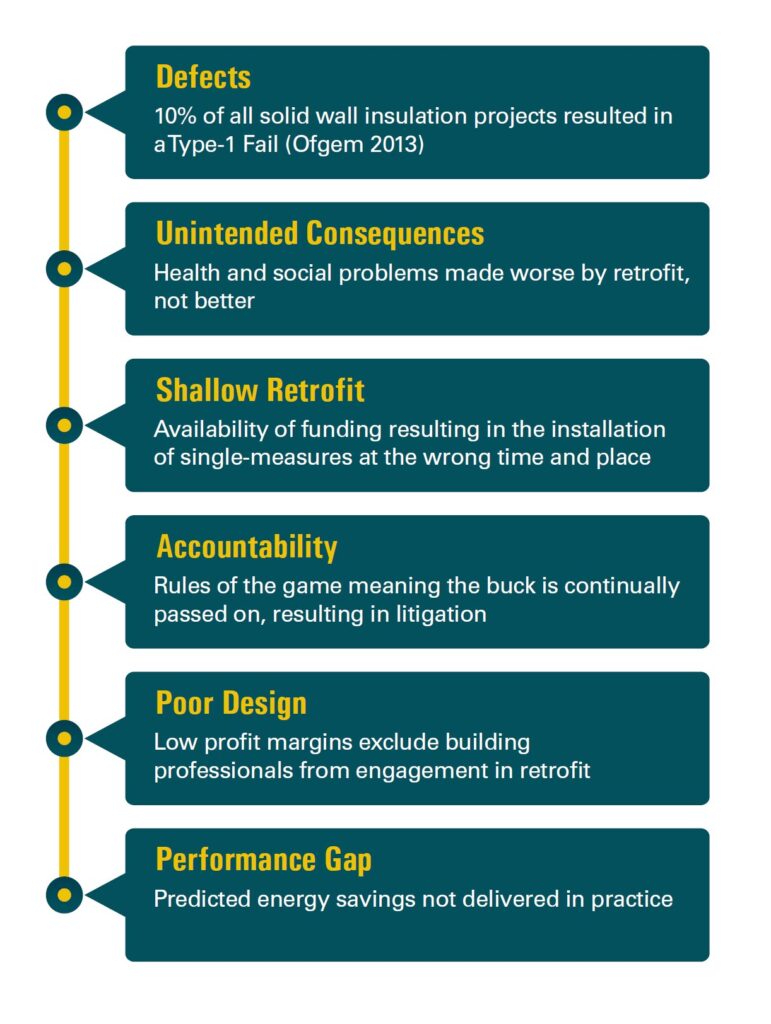
The government department responsible for the Energy Company Obligation (ECO), the Department for Business, Energy and Industrial Strategy (BEIS),took the view that until these issues were resolved, large-scale retrofit was not viable. The industry would not reform itself, and therefore new, mandatory working practices would have to be introduced. Consequently, BEIS sponsored BSI to create new guidance for the sector and Working Groups were formed to shape it. Dr Peter Rickaby, a long-standing retrofit expert, was appointed to head this up as Technical Author. Working Groups comprised of professional, membership training and certification bodies, a broad range of expert consultants, architects and other individuals.
PAS 2035 and TrustMark
In parallel to the PAS 2035 process, BEIS also supported TrustMark to prepare itself to become the established Quality Mark for the sector. Businesses operating under the TrustMark would have to comply with a Code of Conduct a Code of Practice and a Customer Charter. The Code of Practice adopted by TrustMark is PAS 2035, as well as PAS 2030 (2019) for Installers.

Phil Mason, Head of Compliance at TrustMark, tells us about his hopes for the energy efficiency sector under PAS 2035.
What does TrustMark aim to achieve in the energy efficiency sector?
“TrustMark is here to improve consumer protection and peace of mind. By using a TrustMark Registered Business to carry out work in and around their homes, consumers are selecting a business that has made a clear commitment to customer service and trading practices, and that their technical competence has been independently assessed within the context of the Framework Operating Requirements.
TrustMark also aims to enable Registered Businesses to thrive by championing them on the TrustMark website and other marketing channels, and by actively connecting them with consumers seeking services through the customer portals.
By the TrustMark delivery of the sum of these objectives and some offerings that are under development we anticipate improved consumer confidence and growth in the uptake of the services provided by the energy efficiency sector.”
How do the TrustMark and PAS 2035 fit together?
“TrustMark is respectful not to prejudge the outcome of the ECO3 ‘Improving Consumer Protection’ consultation process, however, we are preparing for a positive outcome.
By design the PAS has been written with the principle of focusing on the quality of outputs at all the stages rather than being concerned with certifying people; indeed, it is not possible to be certificated to PAS 2035. Likewise, the PAS has a major focus on specifying a holistic approach to the retrofitting of dwellings, better defining qualification, activities and outputs of the individual retrofit roles prior to the commencement of the physical installation. All of this is in support of the PAS 2030 certified installer being able to have confidence in the design they are supplied to quote against and install from.
On this basis TrustMark has a major role to play in monitoring the compliance of the outputs of the relevant stages. We are in the final stages of delivering the Data Warehouse as one of the recommendations of the Each Home Counts review. The lodgement of key data into the Data Warehouse will be audited for compliance using several methodologies and driven by our developing risk model. We will be able to use our findings to help inform and educate the supply chains in a bid to avoid repeating common mistakes.”
There is a transition period for the industry to gear up for PAS 2035 through to early 2021. What do you plan to do to support companies in this period?
“TrustMark is actively out and about discussing and presenting information about the proposed transition period at every possible opportunity. We will continue with these activities and engage with stakeholders at all levels. We have already produced and published information on our website which is aimed at helping with the understanding of implementation and will continue to build upon this information going forward.”
Where should people go if they have questions about TrustMark and PAS 2035?
“Visit: www.trustmark.org.uk or call 0333 555 1234 where a member of the compliance team can respond to you enquiry.”
To encourage uptake of the TrustMark scheme, the government stated that all users of ECO-funding would need to be members of TrustMark organizations that are seeking to follow a transitionary period to allow for preparation, upskilling and business planning. This also requires new legislation to become law. Consequently, a backstop date of 19 months from the date of the publication of PAS 2035 was proposed – which is understood to mean January 2021.
Other businesses not using public funding are able to apply for the TrustMark on a voluntary basis. The hope and expectation are that customers will come to recognize the TrustMark and would check for this in a similar way to how they might routinely check heating engineers were Gas Safe registered.
Timeline to implementation

The core principles of PAS 2035 explained
A set of core principles underpin PAS 2035. These are often mistaken for jargon and it is crucial that your business develops a thorough understanding of these.
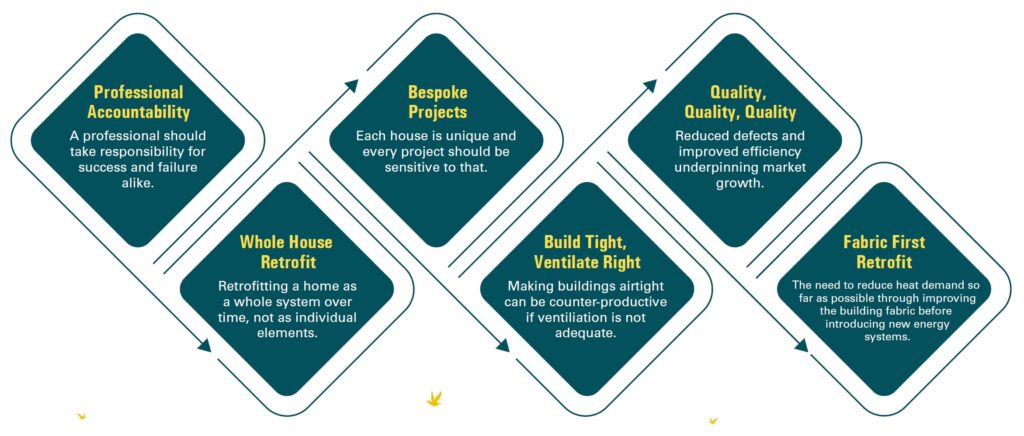
PAS 2035 – The top 10 impacts
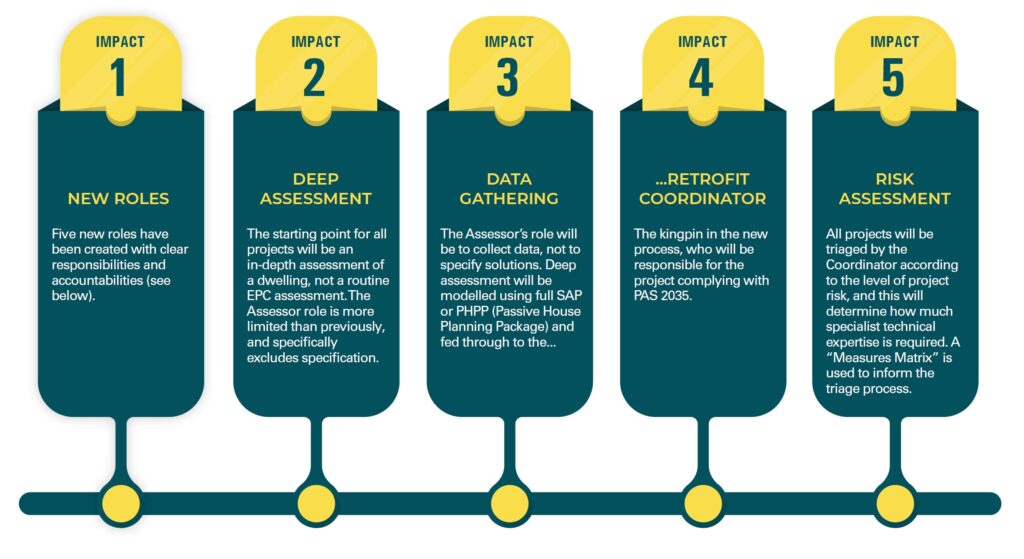
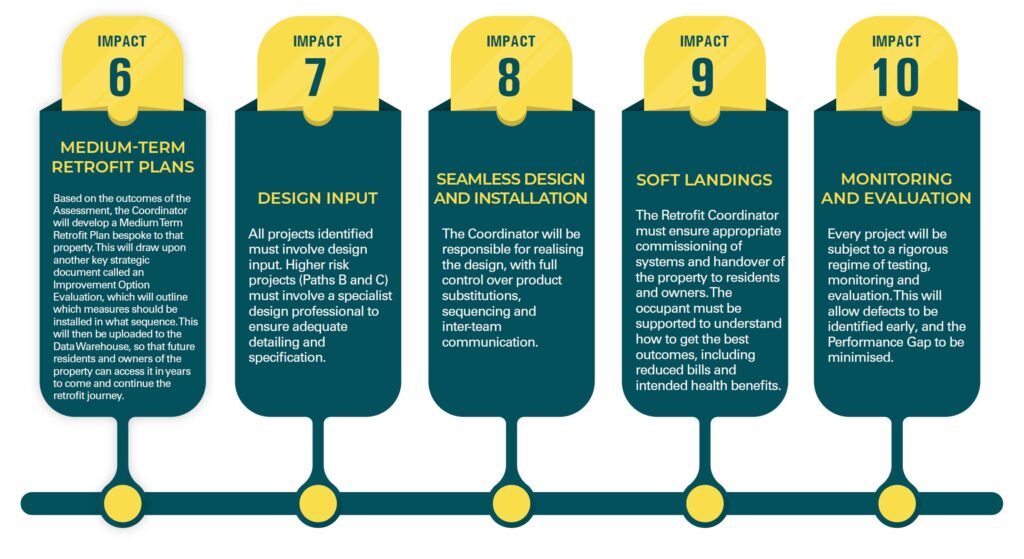
PAS 2035 introduces five distinct roles, and outlines what they should do on each project as determined by the assessed level of project risk. The PAS also spells out what accreditations and qualifications the individual must have. These are summarised on page 8.
It is important to stress that the Coordinator’s role stretches from end-to-end and is a professional role with full responsibility for demonstrating compliance with PAS 2035. They, therefore, should have full oversight of both the Installation and Handover phases, working alongside the installer operating under PAS 2035 (2019).
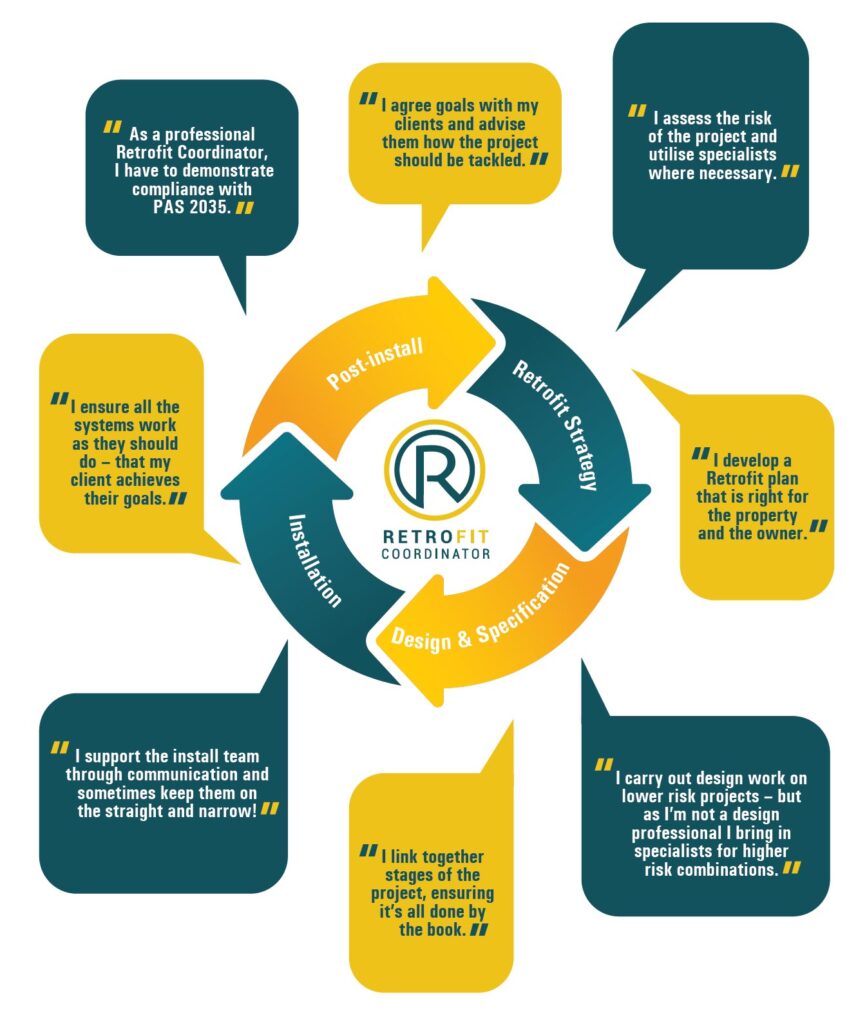
Roles, qualifications and accreditations
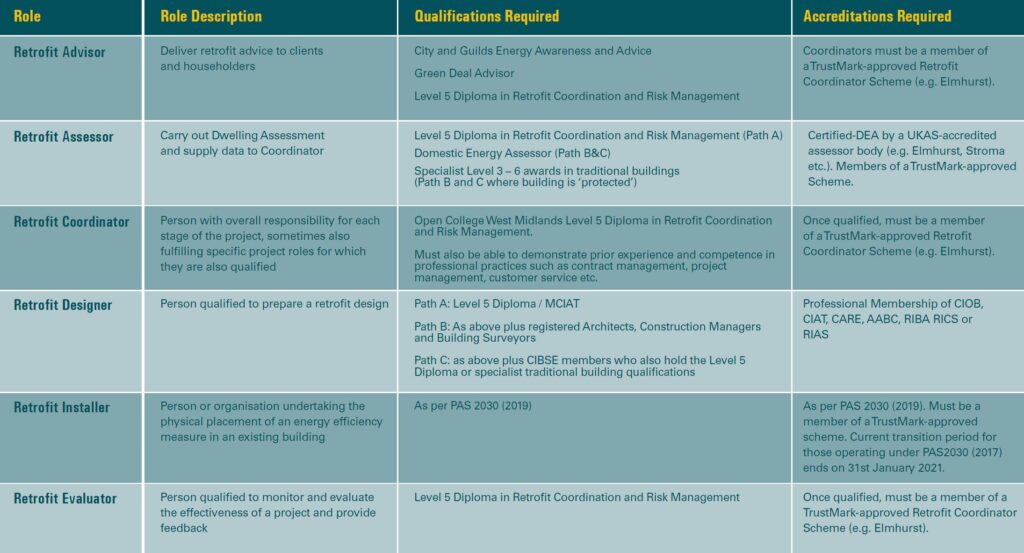
Who does what in the new process?
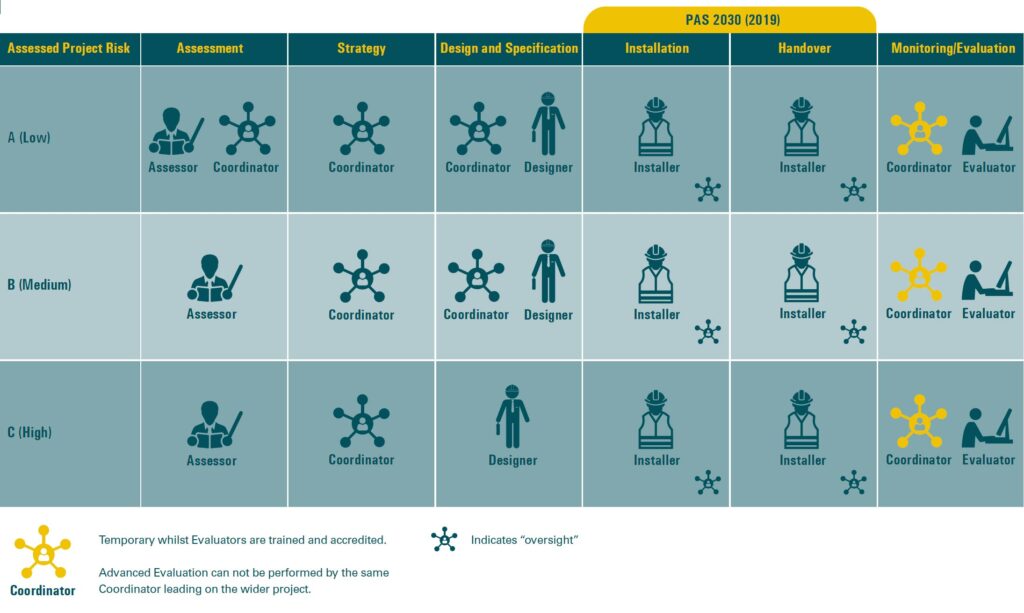
What should I do next?
